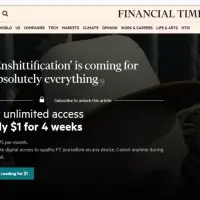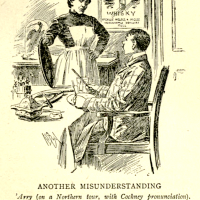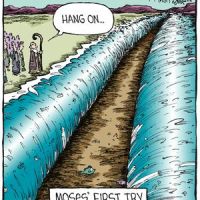 2020 was the busiest year ever on A Pilgrim in Narnia! And by a pretty big margin. In 2020, we topped 1,000 posts, blew past our 1,000,000th page view, and passed 200,000 hits in a single year for the first time. It was a busy autumn, with November breaking the all-time monthly hit record, which was then broken again in December. All but one of the busiest months in the website’s history were in 2020–this despite there not being a single “hot post” like my nerdy “How to Read All of C.S. Lewis’ Essays” 2017 piece, my 2015 article, “The Tolkien Letters that Changed C.S. Lewis’ Life,” or Kat Coffin’ “How do you Solve a Problem like Susan Pevensie?” in 2019 and the follow-up articles (like this one and this one). Kat’s piece is actually one of the top 5 most popular Lewis & Inklings posts ever.
2020 was the busiest year ever on A Pilgrim in Narnia! And by a pretty big margin. In 2020, we topped 1,000 posts, blew past our 1,000,000th page view, and passed 200,000 hits in a single year for the first time. It was a busy autumn, with November breaking the all-time monthly hit record, which was then broken again in December. All but one of the busiest months in the website’s history were in 2020–this despite there not being a single “hot post” like my nerdy “How to Read All of C.S. Lewis’ Essays” 2017 piece, my 2015 article, “The Tolkien Letters that Changed C.S. Lewis’ Life,” or Kat Coffin’ “How do you Solve a Problem like Susan Pevensie?” in 2019 and the follow-up articles (like this one and this one). Kat’s piece is actually one of the top 5 most popular Lewis & Inklings posts ever.
Blog activity continues to grow, despite having reduced weekly content a little over the last couple of years (to about two posts per week, including announcements). The one metric where activity was down a bit was in network connections (likes and comments). I think that has to do with normal trends in blogging, an increased use of Facebook and Twitter for conversations, and the lack of a “hot post.” However, I did lose my cool with a commenter early in 2019 and stepped back from website conversations a bit, which I think is also a factor.
 Overall, what the statistical story tells is that A Pilgrim in Narnia is now simply one of the trusted resources on the Internet for resources on the intersection of faith, fantasy, and fiction in conversation with writers like C.S. Lewis, J.R.R. Tolkien, the Inklings, L.M. Montgomery, and contemporary fantasy and SF writers. Older, substantial pieces of writing continue to be read over and over again by visitors to A Pilgrim in Narnia, including “The Deeper Meaning of The Great Divorce,” “Harold Bloom’s Canon: The Essential List,” “The Planets” in C.S. Lewis’ Writing,” and Narnia posts, like “The Real Order to Read Narnia: A Third Way,” “A Timeline for the Creation of Narnia,” “Good Political Leadership According to Narnia” (worth revisiting given 2020), and the one more scholars should read, “Is Narnia an Allegory?“
Overall, what the statistical story tells is that A Pilgrim in Narnia is now simply one of the trusted resources on the Internet for resources on the intersection of faith, fantasy, and fiction in conversation with writers like C.S. Lewis, J.R.R. Tolkien, the Inklings, L.M. Montgomery, and contemporary fantasy and SF writers. Older, substantial pieces of writing continue to be read over and over again by visitors to A Pilgrim in Narnia, including “The Deeper Meaning of The Great Divorce,” “Harold Bloom’s Canon: The Essential List,” “The Planets” in C.S. Lewis’ Writing,” and Narnia posts, like “The Real Order to Read Narnia: A Third Way,” “A Timeline for the Creation of Narnia,” “Good Political Leadership According to Narnia” (worth revisiting given 2020), and the one more scholars should read, “Is Narnia an Allegory?“
Those are the old posts that keep respinning. This year’s top posts are very event connected, capturing COVID-19, some focal points in my scholarship, and the loss of key figures in 2020, like Walter Hooper and Christopher Tolkien. Here is my list of the top 6 newly written articles of 2020, with some honourable mentions. Many thanks to all you great readers and sharers of material in 2020. I receive absolutely no pay or support for this website, so reaching readers is the main reward. Best wishes in 2021!
 #6. The World as a “Vale of Soul-Making”: A Brief Note on John Keats, C.S. Lewis, and L.M. Montgomery click here
#6. The World as a “Vale of Soul-Making”: A Brief Note on John Keats, C.S. Lewis, and L.M. Montgomery click here
As I describe in this year-end post, 2020 was a big period for me in my work with Prince Edward Island writer, Lucy Maud Montgomery. In 2020, after years of writing and editing, my first Montgomery studies peer-reviewed paper was published. This was my literary-critical piece, “Rainbow Valley as Embodied Heaven: Initial Explorations into L.M. Montgomery’s Spirituality in Fiction,” published in the Journal of L.M. Montgomery Studies (see here). A second piece, “Making Friends with the Darkness: L.M. Montgomery’s Popular Theodicy in Anne’s House of Dreams,” won the 2020 Elizabeth R. Epperly Award for Outstanding Early Career Paper (see here, including the description of my piece)–and I have the draft open now for revisions for a 2021 publication in the Journal of L.M. Montgomery Studies. And 2020 also saw the launch of the MaudCast, the official Podcast of the L.M. Montgomery Institute, which I produce and host. It was a big Montgomery year, and I have plans for more.
As I postponed my spring 2020 L.M. Montogmery series, I published fewer Montgomery articles on A Pilgrim in Narnia in the past year. Most of my writing on Montgomery still exists as abstracts for unwritten papers and scattered notes. But I did work up this 6th most popular Pilgrim piece, “The World as a ‘Vale of Soul-Making,'” where I take a great moment from Rainbow Valley and show its possible ur-text in John Keats. Like young Faith Meredith in Rainbow Valley, it seems that C.S. Lewis’ philosophy of joy wants to challenge the idea that life is a “vale of tears.” However, Lewis does think that, whether Keats understood it or not, the world is a valley fit for soulcraft. My work argues that Montgomery’s fiction is built in that way, and this little piece gives a hint of that possibility.

 #5. My Paper, “A Cosmic Shift in The Screwtape Letters,” Published in Mythlore click here
#5. My Paper, “A Cosmic Shift in The Screwtape Letters,” Published in Mythlore click here
It is unusual for academic posts to get much traction–much less, a post that points the reader to a long peer-reviewed paper. However, this post represents 8 years of archival and literary-critical work on The Screwtape Letters and its place within what I call The Ransom Cycle–C.S. Lewis’ WWII-era experiment in speculative fiction. Mythcon was where I first launched my discovery that it was Dr. Ransom of the aptly misnamed “Space Trilogy” who was the discoverer and translator of the tutorial (and anti-tutelary) epistles by the senior demon, Screwtape. So it was with great pleasure that my most substantial piece, “A Cosmic Shift in The Screwtape Letters,” was published in Mythlore in autumn 2020. This post celebrates the publication, provides a summary of my findings, and makes links to the resources you will need to follow the story.
Not completely disconnected, 2020 also saw the publication of “The Archangel Fragment and C.S. Lewis’s World-Building Project,” which I co-wrote with Lewis handwriting specialist, teacher, novelist, and all-around good guy, Charlie W. Starr.

 #4. The Legacy of Walter Hooper, C.S. Lewis’ Better Than Boswell click here
#4. The Legacy of Walter Hooper, C.S. Lewis’ Better Than Boswell click here
In early December, following a credible social media announcement and news that he had been sick, I announced on my blog that Walter Hooper, C.S. Lewis’ Literary Secretary, Has Died (1931-2020). Like Christopher Tolkien of his father’s work, Walter Hooper has been a critical resource for Lewis readers. While there have been many hands at the task, no other figure has been as important to the Narnian’s literary legacy as Walter Hooper. Through the curation and editing of letters, essays, stories, and pieces nearly lost to time, we have a wealth of inexpensive and constantly-in-print materials. Readers and fans of C.S. Lewis are deeply in debt to Walter Hooper for nearly six decades of literary work.
It took me a few days to write the piece, but I was finally able to publish “The Legacy of Walter Hooper, C.S. Lewis’ Better Than Boswell.” As I had only met Walter a couple of times and there have been plenty of great tributes, I wanted to do something different. In this longer article, I assess Walter Hooper’s positive legacy for C.S. Lewis studies. In this resource-rich piece with select bibliography, I consider Hooper as a Compiler, Archivist, Anthologist, Editor, Publisher, Preface-writer, and Mentor. While it would have been interesting to have someone who was an intimate biographer of C.S. Lewis’ life and letters, like Boswell of Johnson, what we got–what Walter Hooper developed into–was a resource more helpful for a broad community of readers. There is more to say about Walter Hooper’s legacy, but this is the piece I worked the hardest on in late 2020, and within 2 weeks it became one of the top posts of the year.
 #3. It is Easy to Teach C.S. Lewis’ “Till We Have Faces,” but It’s Hard to Blog About It click here
#3. It is Easy to Teach C.S. Lewis’ “Till We Have Faces,” but It’s Hard to Blog About It click here
Before the most recent end of the world, I began 2020 with a series on Till We Have Faces. This was original work that came out of a winter semester where I was teaching the text twice. I used this opportunity to do some writing about Till We Have Faces–the first time I had done anything substantial with the text in eight years of writing about Lewis.
Though I am always nudging readers to see The Great Divorce as C.S. Lewis’ most genius work of fiction, Till We Have Faces truly is a remarkable novel. It is the dying-days journal of Orual, Queen of Glome, who sues her capricious gods for their unfair treatment of her. The writing is elegant, the portrait is intimate, the transformational element is intricately tied to the psychological development in Orual’s tale, and the fictional world is complete. I know of many people who resist Lewis’ work but who admit that Till We Have Faces is among the 20th century’s important novels.
Perhaps because of its honesty about my hesitation to write about such a complex and layered novel, but most likely because it works as a front-page to my other articles, this series introduction piece was the 3rd most popular new post of 2020. Here are the others in the series:
- Orual and the King of Glome–also one of the top 10 new posts of 2020
- A Peasant Pagan Prayer in Till We Have Faces
- Superinfection, COVID-19, and C.S. Lewis’ Till We Have Faces
- The “Pints with Jack” Podcast on Till We Have Faces
- Guest Spot on the Pints With Jack Podcast, Talking About C.S. Lewis’ Till We Have Faces
- Dance, Long, Leap, Speak, Conquer, Break: The Heart in C.S. Lewis’ Till We Have Faces
- Naturally Holy: Some Thoughts on Till We Have Faces, A Guest Post by Katie Stevenson
 #2. Christopher Tolkien, Curator of Middle-earth, Has Died, and a Letter from His Father click here
#2. Christopher Tolkien, Curator of Middle-earth, Has Died, and a Letter from His Father click here
In January 2020, the last living Inkling passed away. In terms of literary creativity and scholarship, Christopher John Reuel Tolkien (21 Nov 1924 to 15 Jan 2020) may well have been overshadowed by his father, J.R.R. Tolkien. While it is true that his father was the subcreative genius of a vast, sweeping legendarium associated with the bestselling Lord of the Rings, Christopher Tolkien grew to become the literary curator of that world. At a rate of a book every year or two, Christopher Tolkien provided us two dozen collections of incomplete works, background materials, archival pieces, and translations–writing from the Professor that most of us would never have seen otherwise.
I have tried other words for Tolkien’s sharp editorial eye and tireless work: custodian, guardian, conservator, gift-giver. In the end, “curator” stuck for me. For this gift to the lovers of Middle-earth and fans of Tolkien’s linguistically rooted mythic worlds, we are forever grateful.
 #1. Superinfection, COVID-19, and C.S. Lewis’ Till We Have Faces click here
#1. Superinfection, COVID-19, and C.S. Lewis’ Till We Have Faces click here
Perhaps it is not a huge surprise that in 2020, a COVID-related post was #1. How often have we heard the word “unprecedented” in those pandemic-stricken months?
What I particularly liked about this post, however, is its core literary-critical argument and the way that context helped me read in new ways. While I did push back against COVID deniers in the piece (see here and here as well), it was reading Till We Have Faces while learning about the social and historical realities of plagues that triggered a new discovery for me. Never before did I see how Lewis used the plague as the structural event to trigger the critical moments in Orual’s story. While there are a series of key events that are the critical supports of the story–like pillars in a temple–none is more important than the pestilence that inhabits the land of Glome. COVID-19 helped me see this social moment in the text and ask new questions–including some about Lewis’ own experiences.
Thus, however terrible COVID-19, lockdowns, and 2020 has been in general, I am constantly reminded of how our contexts can help us become better readers.
The Top Guest Post, hands down, belongs to Justin Keena, and his detailed and interesting paper on “C.S. Lewis and J.R.R. Tolkien: Friendship, True Myth, And Platonism.” This is the first time a detailed academic piece received much traffic, so I congratulate Justin on his work!
The Top Post on a Classic Piece was “Street Haunting: A London Adventure” by Virginia Woolf, a nice discovery for me in 2020 and a great urban read at any time.
The Top Shared Resource was, again without much competition, “Neil Gaiman on Discovering the Author in Narnia (and a note on beards).” Of my “Friday Feature” notes, Throwback Thursdays, and occasional other discoveries and announcements, this personal video by Neil Gaiman was the most popular among fans. Someday I’m going to have to sit down and have a chat with this fellow.
The Top Video of 2020 was “A Canticle for Leibowitz: A 10 Minute Book Talk with Brenton Dickieson,” which I share with you here.

























